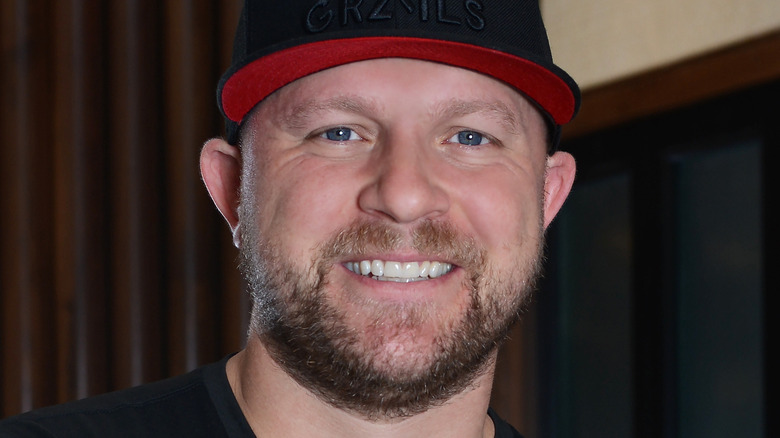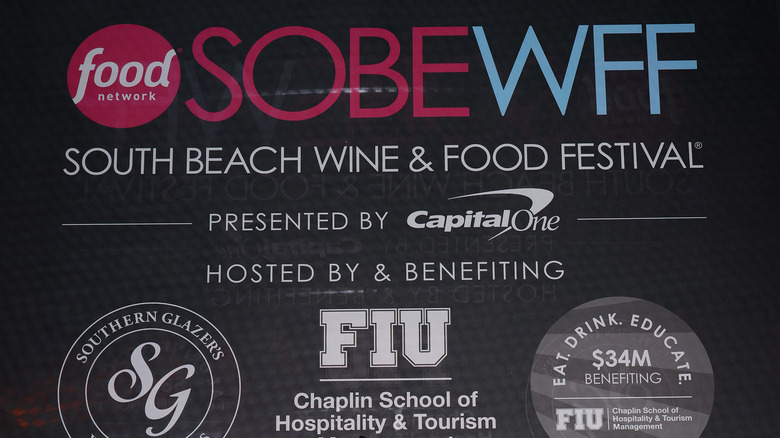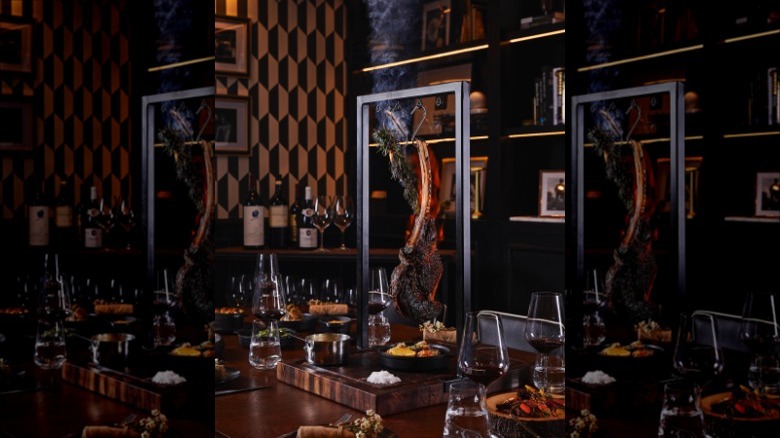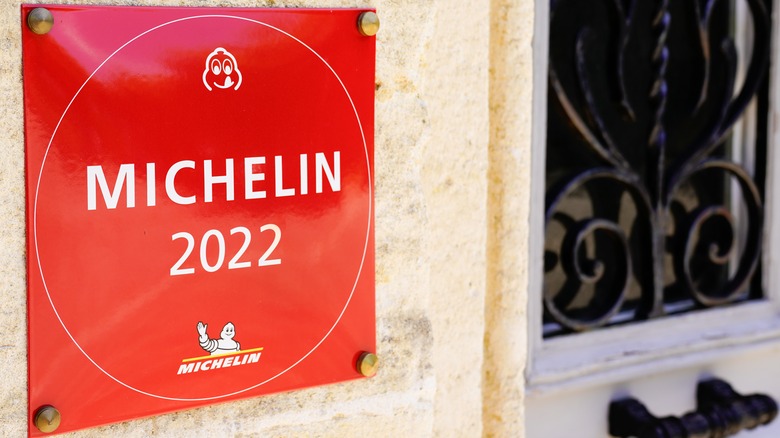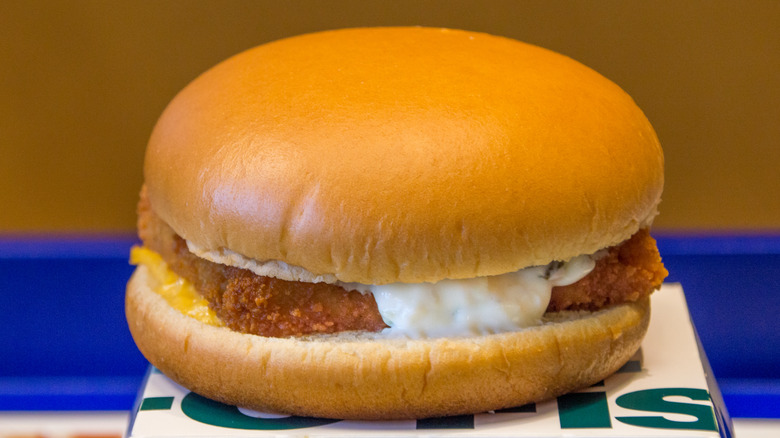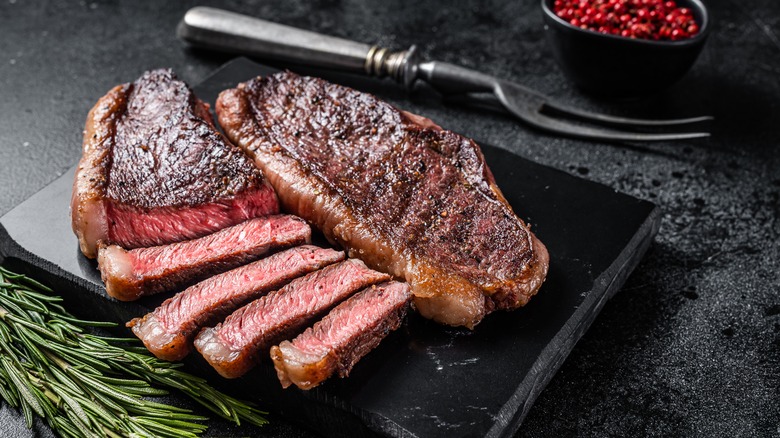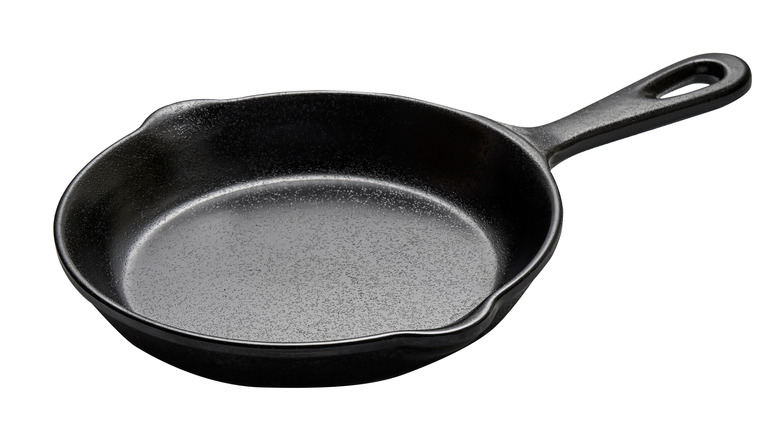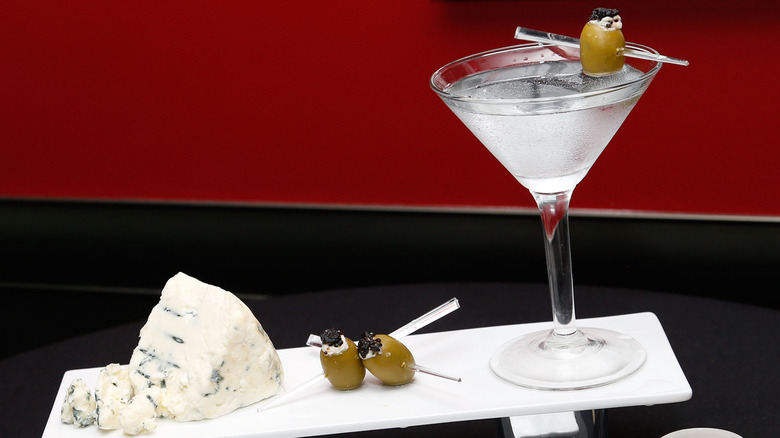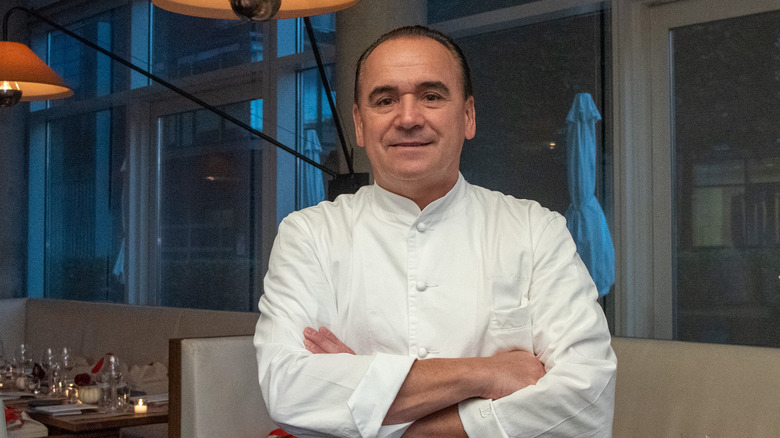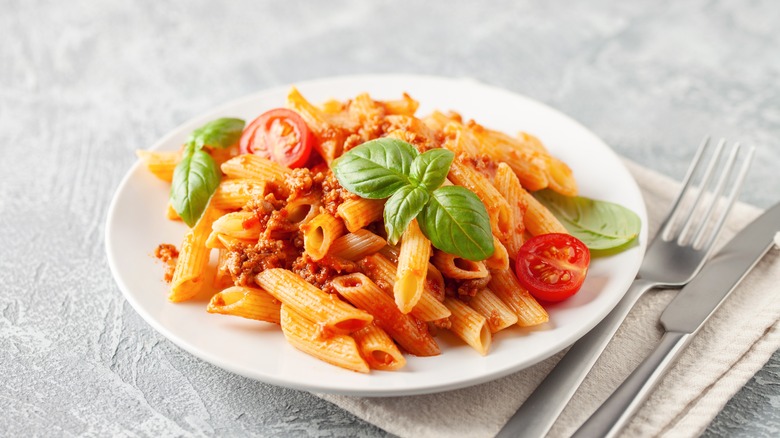Jeremy Ford Blends Old And New At The Butcher's Club - Exclusive Interview
Jeremy Ford sure does like to keep himself busy. The "Top Chef" winner has recently grown his restaurants from one to three. Stubborn Seed, which received a Michelin star, is now joined by Beauty & The Butcher, as well as The Butcher's Club located at PGA National Resort in Palm Beach. This is all hot on the heels of completing a second season of the hit show "Fast Foodies," where Ford competes alongside fellow "Top Chef" winner Kristen Kish and "Iron Chef America" winner Justin Sutherland.
As if that is not enough, he also made an appearance at the South Beach Wine & Food Festival, where he hosted a dinner alongside Gabriel Kreuther. Even with this busy schedule, we got the chance to catch up with Ford for an exclusive interview to discuss his restaurant ventures and the upcoming projects he has in the pipeline. He also shared some of his professional tips and tricks that will help anyone become the top chef of their kitchen.
South Beach Wine & Food Festival
First, I wanted to ask you a little bit about the event and what your favorite part of the South Beach Wine & Food Festival was.
Wow. This year was really fun. Some of the years in the past, I've either been too busy or didn't make time to get to enjoy some of the events. But my favorite part ... God, there's so many. I would definitely say the dinner; getting to cook with Gabriel was insane. I learned a lot about how ... Actually, he hired my mentor for JG. He's the Vice President for Jean-Georges. I had no idea that he hired him. The dinner was definitely my highlight.
How do you handle the chaos of the festival?
It's nutty. I cherry-pick my favorite stuff to go to. I like the fun stuff, like Burger Bash. I did Tacos & Tequila with my other half. That one was a blast. I had a good time at that event.
The Butcher's Club
With your new restaurant, what made you want to partner with PGA National Resort and open The Butcher's Club?
I love what Brookfield is all about. I always have. I've been a fan of them for years and years. I come from a hotel background. I was one of the ones that did about a decade — probably seven, eight years — in a hotel, all working underneath celebrity chefs that have tons of great food and accolades. I've always loved having the resources of a hotel supporting you ... You [have] an engineer department, you have stewarding — all these departments that are fulfilling all these roles that you need every day. I always love that.
Then when I went on my own, we didn't have any of that stuff. Being back with a hotel, having that support, is ... You can't put a price on that. It makes life so much better. Our focus is not [on] worrying about internal issues like you have to worry about as a street restaurant. I love how supportive Brookfield's been. I absolutely love the Palm Beach area.
It is a beautiful area. The vibe that the restaurant elicits is that 1950s swanky, sophisticated atmosphere. How do you build a menu to go with that?
We have a cool hybrid situation right now between classic and more up to today's style of a steakhouse, but we're more than that. We're using local produce from Kai-Kai Farms for our broccolini dish. We're not buying cases and cases and pallets and pallets of stuff from a big distributor. We still have that small restaurant mentality. We're just doing it in an environment where we have this beautiful [dining room] ... It speaks to 1950s, but it's also got this edginess to it. That's where our approach is on the food as well.
Are there any specific menu items that you feel help bring all those elements together?
Our broccolini is sourced from Kai-Kai Farms, which is a local awesome purveyor — that's this charred broccolini with caper sofrito, pistachio puree. It's really bright and vibrant. It's not the normal steakhouse side you would see. Sometimes you go into a steakhouse that's more traditional, and you're going to have maybe broccoli, but there's not a lot of love into it. We took all those delicious things.
Another good example is our version of creamed spinach. It has that classic, sumptuous, creamy spinach vibe, but it has a whole twist on it because we've pureed this mixture of tarragon, dill, and basil. When you eat it, you're like, "That's creamed spinach, but it has a ton of different flavors going on." It's those little touches that twist our classic take, giving things a modern, local approach to that vibe.
Restaurants and awards
You've also recently opened another restaurant, Beauty & The Butcher. What was the impetus for opening this restaurant, and how does it distinguish itself from your other ventures?
There's been signature notes across the board. The chicken that I have at Stubborn Seed is the same one that I have at all three restaurants. But that and bravas are the only things that are at all three restaurants. Then there's little bits and pieces, like our jalapeño fritters that we have at Butcher's Club. I also carry that dish, but a little bit different at Beauty & The Butcher.
There's some of our signature dishes that are at all three restaurants. What makes them all different is all the small plates. Our fish that we have at Beauty & The Butcher is ... Our chef is Colombian. We collaborated on this house-made Colombian chorizo white bean cassoulet with a local snapper on top. That dish is not at any other restaurant.
There's this collaborative process between me and all of the chefs where when we're designing a new menu; we come together. A lot of their influences — whether it's from their heritage, their culture, or their grandmother's recipe — we always try to involve everybody in the creative process. That's why at our restaurants, you may have some stuff that's completely different and off the wall, because there's this beautiful creative process happening.
You received a Michelin Star, one of the most coveted recognitions for restaurants. How did it feel getting that Michelin Star?
Getting it on the first year [of Stubborn Seed] — that's a pretty cool thing for that to happen for a chef. I've been more or less in that realm my entire career. One, for it to come to Miami was already a huge win. That's a huge move in the right direction for our culinary scene because it shows that Miami's being taken a little more seriously than it has in the past for cuisine. That was cool enough. As soon as we heard the news, we were like, "We're going to push for it because we feel like we're doing what it takes to earn that."
Getting it literally felt like I could die in peace. I know that sounds crazy as hell, but it is the truth. When you're in this business from the beginning with the mindset of having a Michelin Star-style taste in your restaurant, it's a dream come true when you get the star. Whether you're getting a one, a two, or a three — of course, we'd love to have a second one. But getting a Michelin Star [is] in its own category of our craft.
Recreating dishes on Fast Foodies
Switching gears a little bit to "Fast Foodies," what has been the most challenging item to recreate on the show?
Ooh, I struggled on quite a few of those. Kristen [Kish] was the champ on that copycat challenge. The pizza was the hardest from Dominoes because ... when you're making a proper pizza dough, Dominoes doesn't do it like that. They're pre-made, frozen doughs, where they heat them up. That was hard to try and do on the fly. Recreating that dough situation was a nightmare.
Is there a food that you're hoping will come up for the show?
Something local would be awesome. One of these Pollo Tropical chains that's only in Miami — that would be awesome to see. But I don't know if we're doing a Season 3 or if we're re-signing that because we're all super busy with different weird schedules. Kristen has two shows now. It's in my calendar right now to shoot. I'm focused more on the restaurant side.
You've recreated the famous Filet-O-Fish sandwich and taught Kelly Clarkson how to do it. What is the secret to a perfectly crisp fried fish sandwich? 'Tis the season.
That's one of the better bites on the entire show. I think about Kraft American single cheese on fish, and you're like, "That sounds ridiculous," but it's actually super good. It's all the combination, the crispy fish, creamy cheese, toasted bun, tartar sauce. I added capers to mine, which I got a bunch of heat on, but whatever.
I love capers.
It needed capers, so whatever.
A balancing act
You have a lot of restaurants.
Yeah, dude. I thought one was hard. One is one thing, but trying to split your time into thirds is weird.
How do you balance that?
Right now, I'm trying my best. I'm spending a couple days at each restaurant a week. But if you start doing the math, there's only so much you can do in a five-day workweek if you want to have any balance or quality of life. Luckily enough, Stubborn Seed is a 5-and-a-half-year-old restaurant. It's got a well-oiled machine type of team right now. Everyone who's there is super passionate and trying to drive the restaurant forward and even to a higher level. Stubborn Seed, thankfully ... They don't need me to be on the pass five days a week there. But that does change. Tomorrow, I could have two chefs put in their notice and a cook walk out, and then it's not okay anymore. Our quality of life as chefs, when you get into more than one restaurant, depends on how well you take care of your employees and your staff.
If you don't take care of people and there's a lot of turnover, there's no way to be able to properly divide your time and say, "I'm only going to be here two days a week." That's not the reality. It's really hard. Luckily enough, right now, Stubborn's is good. [At] Butcher's Club, I have Dallas, who's been a chef with me for a long time, and she's killing it. Butcher's Club is good. Beauty & The Butcher, we're still trying to stabilize. I'll be there this evening for service because we're still trying to get it under control.
But it's nutty. To answer your question, it's absolutely nutty in all aspects because [in] all three restaurants, I have menu changes coming up for Spring. [It's] how you're going to divide your time to make three new Spring menus — because we don't change the full menu at each restaurant, but you're still changing multiple dishes — and that's a lot. Spring's a weird season because some of the stuff's only available for two months. You're making a dish based around ramps that's only around for two months. Spring's weird.
Then you have to multiply it by three.
Then multiply by three. Oh, Lord.
Where's the meat?
Your restaurants also feature high-quality meats. What is something that people get wrong when they're choosing their cuts of meat?
There's a lot that goes into the right cut of meat because ... God, that's a rabbit hole right there. But the biggest problem is you don't want to always choose choice, which is a select — that's a grading. Either you go prime or you go Wagyu. If I'm going to put in the effort to make a good steak with good sides and a good sauce, I'm going to be spending money either way. If I'm going to make one, I have to start with a good product.
A lot of people go and buy USDA choice, which is not a bad piece of meat — it's still good. That grading doesn't say it's not as good; it just doesn't have as much marbling. If I want a really juicy steak, I'm looking for that fine web of fat that's running through the steak. You don't have as much on the choice line. You can make a good cut of meat out of choice, but it's not going to be a prime or a cut of Wagyu. I don't care what you do to it.
Overlooked necessities
For those who are building their home kitchen, what is the one implement everyone should have?
Man, there's so many things you need — a good cast iron pan. A lot of people don't realize the sear you get on a good cast iron, because I can have an electric stove or a gas stove, and it's still going to get my pan hot ... I would love to have a gas stove, but [with] a cast iron pan, no matter what you have, you're going to get a good sear.
You talk a lot about sustainability on your social media, and your restaurants heavily feature seasonal items. What is one sustainable food that is often overlooked?
Vegetables ... mushrooms ... Everyone's on that cake right now. But the most sustainable thing that has the least amount of carbon footprint would have to be mushrooms. The building that we're buying ... We buy our mushrooms locally from a farm called Gratitude Garden. They have a very small building that produces a lot of product — hundreds and hundreds of pounds. It's a very sustainable growing process. I think mushrooms are the future as well.
Making the perfect cocktail
Your restaurants also feature interesting and unusual cocktails. What's one of your favorite ways to elevate a cocktail?
If you have a whipped cream container, an iSi, a fun technique that we do is you basically make a Sabayon, which is pretty simple: sugar, eggs, and then whatever acidity, sugar, or whatever else is going to be in there, passion fruit. You load that into an iSi, a whipped cream container, and you can make any kind of rum cocktail. You can basically make a Sabayon. You put it in an iSi, and you put a big inch-and-a-half floater of this citrusy, sour-and-sweet foam on top of a rum cocktail.
We actually do that warm. You keep the whipped cream tin warm, you have a cold rum cocktail on the bottom, and then you have this frothy Sabayon that's warm on your lips on the top. It's a cool way to take any rum cocktail and make people really, "Wow," in that awe moment.
When you are making a classic cocktail, how do you make a perfect martini?
Ice-cold glass. I love doing the blue cheese olives. People can say what they want because bartenders hate dealing with that, but an extra dirty martini needs the house-made stuffed olives — it has to [have them].
Flavors and failures
Who are some of your significant food influences?
You go through phases. Right now, an actual chef and a book that I find super useful for creating new dishes is Greg Gourdet. He's got a new restaurant called kann in Portland. When I was writing the menu for Beauty & The Butcher, there were moments where I was like, "Man, I want to try this spice blend from the book." I actually ended up using quite a few bases and altering into my own recipes from his ... I love that the flavors of Haiti and that culture are so intense. He did a really good job of making it super easy and accessible.
That's one I'm into. Obviously, Jean-Georges — my whole cooking style changed once I was introduced to him. Dean Max is a big influence in my career as well. [They're] all very different chefs too. One is super Haitian and all kinds of world spice flavors; then you have JG, who's Asian-inspired; then Dean, who's this Italian. Having a good range of influences is good for your food — it benefits a lot.
Things don't always go according to plan in the kitchen. What is one kitchen failure that sticks in your mind?
In a commercial setting, forgetting something. There's so many different components that goes into one of our dishes. Sometimes you're talking in double digits, the amount of items that could potentially be on one dish. If you forget two items on your prep list, it's going to make for a bad night, because you're going to have to 86 a menu item. It's going to make for an uncomfortable interaction between your server and guest. There's a lot of bad stuff that follows forgetting stuff.
Short on time, not passion
When time is tight, what is your go-to meal for feeding you and your family?
Probably pasta for convenience [and] reheat-ability. I usually try to cook for two or three meals at a time. Pasta is always that one where you can scavenge through your fridge, and whatever is in there can go in, in some shape or fashion.
You've obviously been kept very busy. You have multiple restaurants. Do you have any other upcoming projects that we should know about?
I'm looking at potentially doing a project in Fort Lauderdale — still working out some details, but something to potentially be excited about. Lauderdale [is] the city that I first moved to when I arrived to South Florida, so I definitely have some roots there. Then hopefully Aruba ... It's in very early stages, but [those are] two things that might be getting cooked up soon.
The South Beach Wine & Food Festival takes place annually in South Beach, Florida.
This interview has been edited for clarity.
